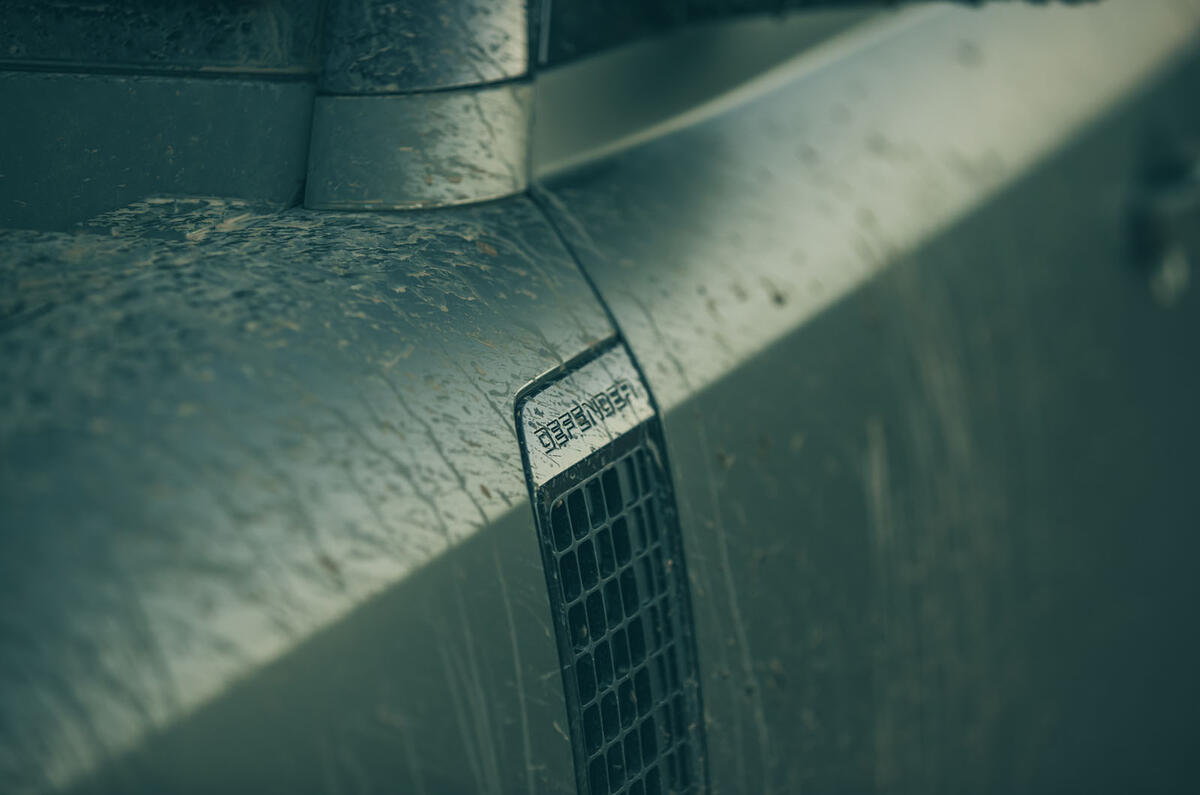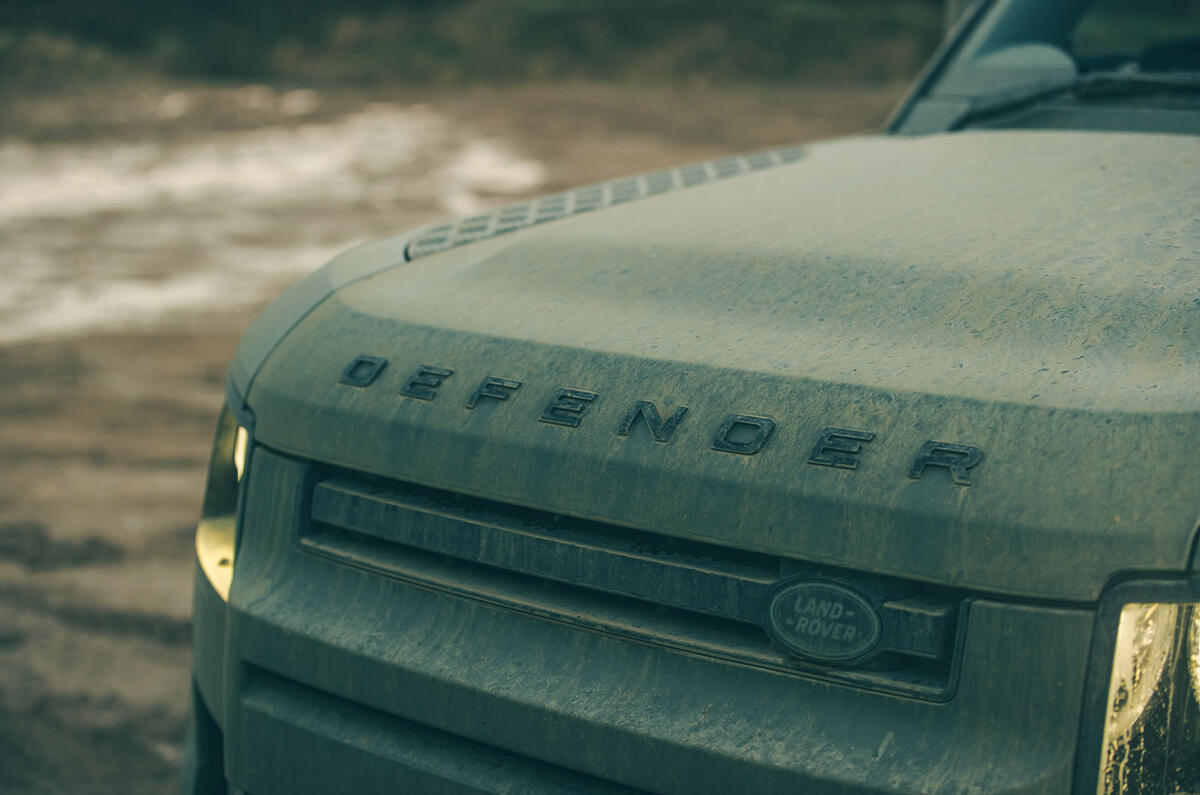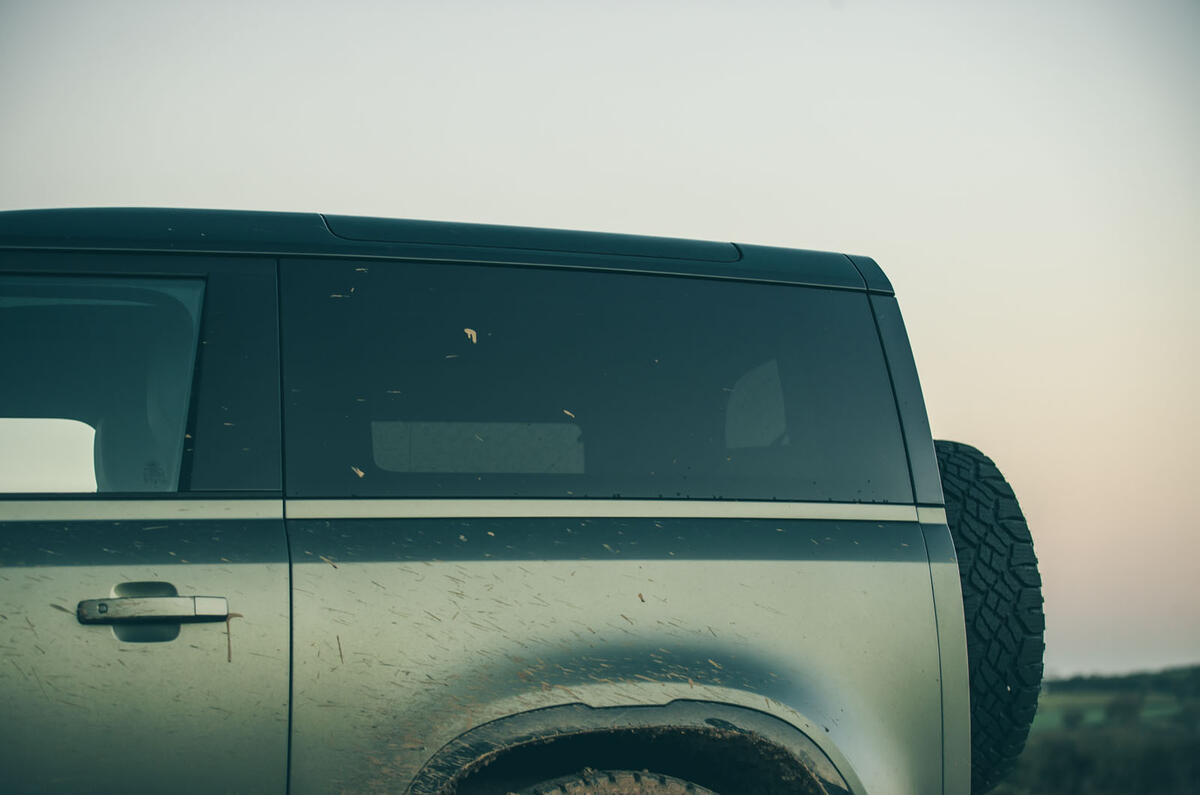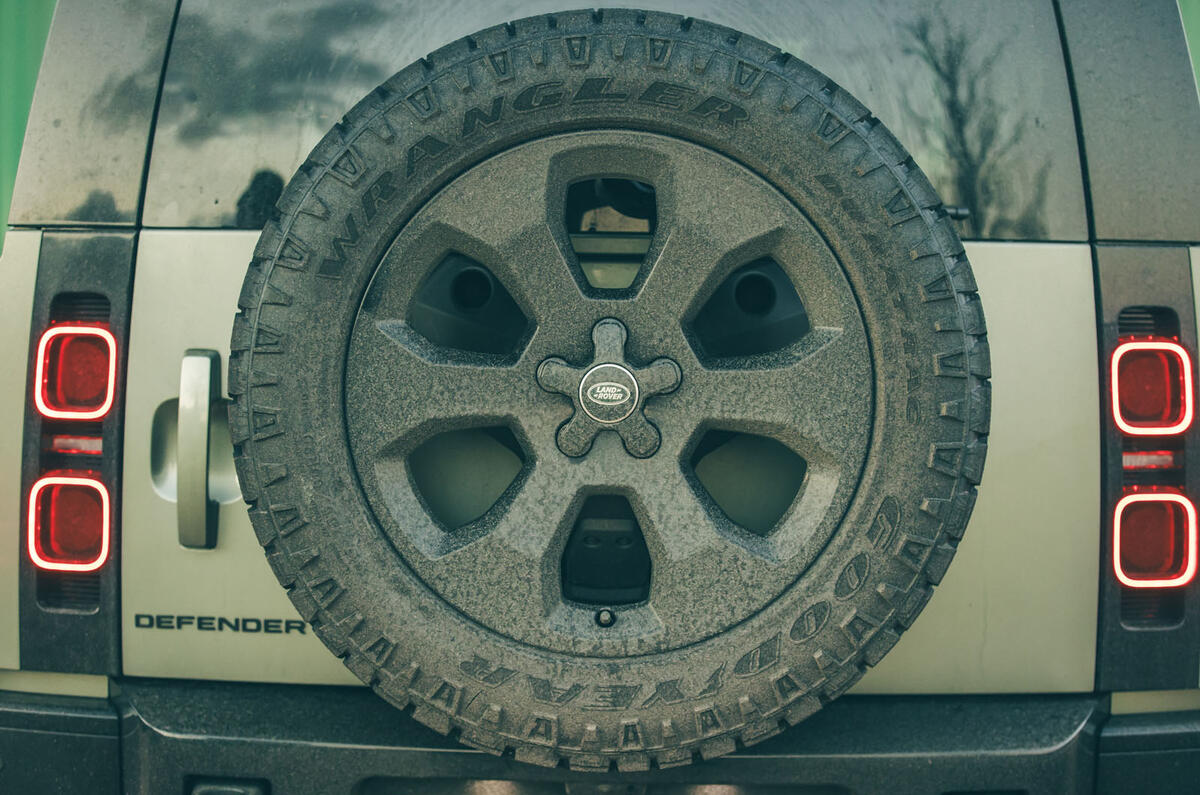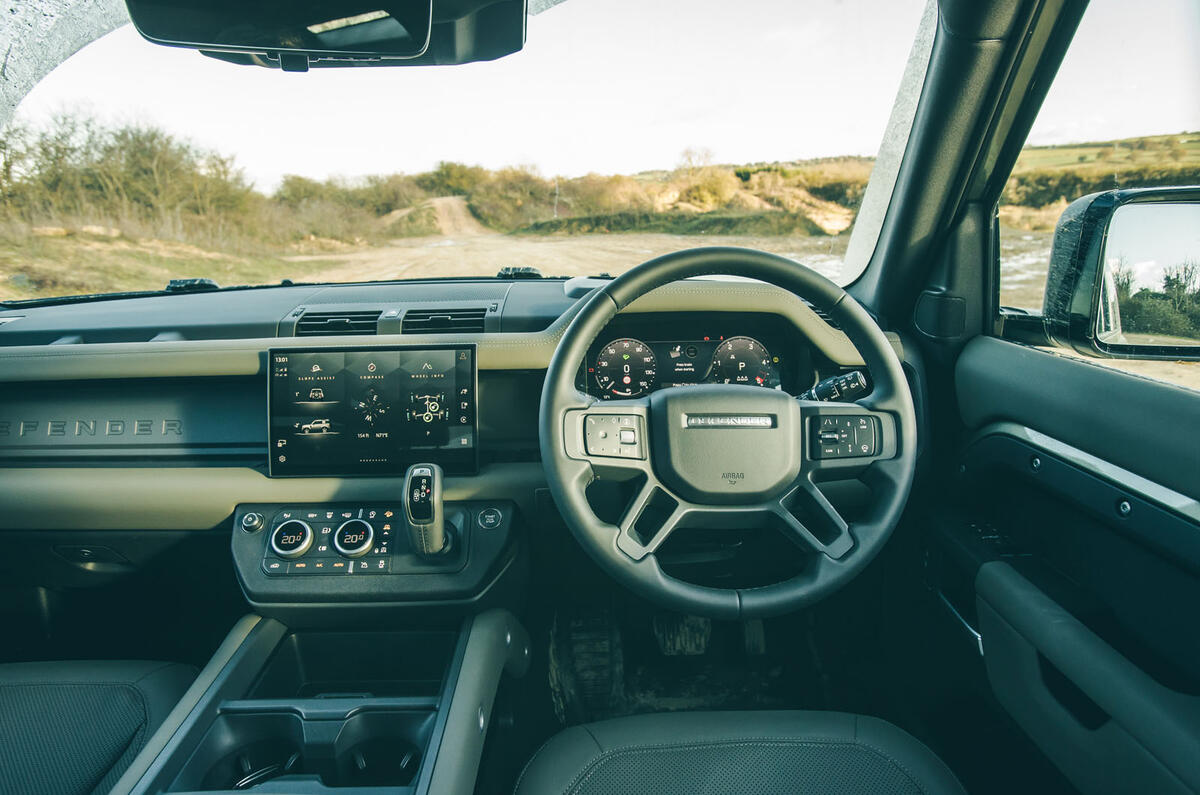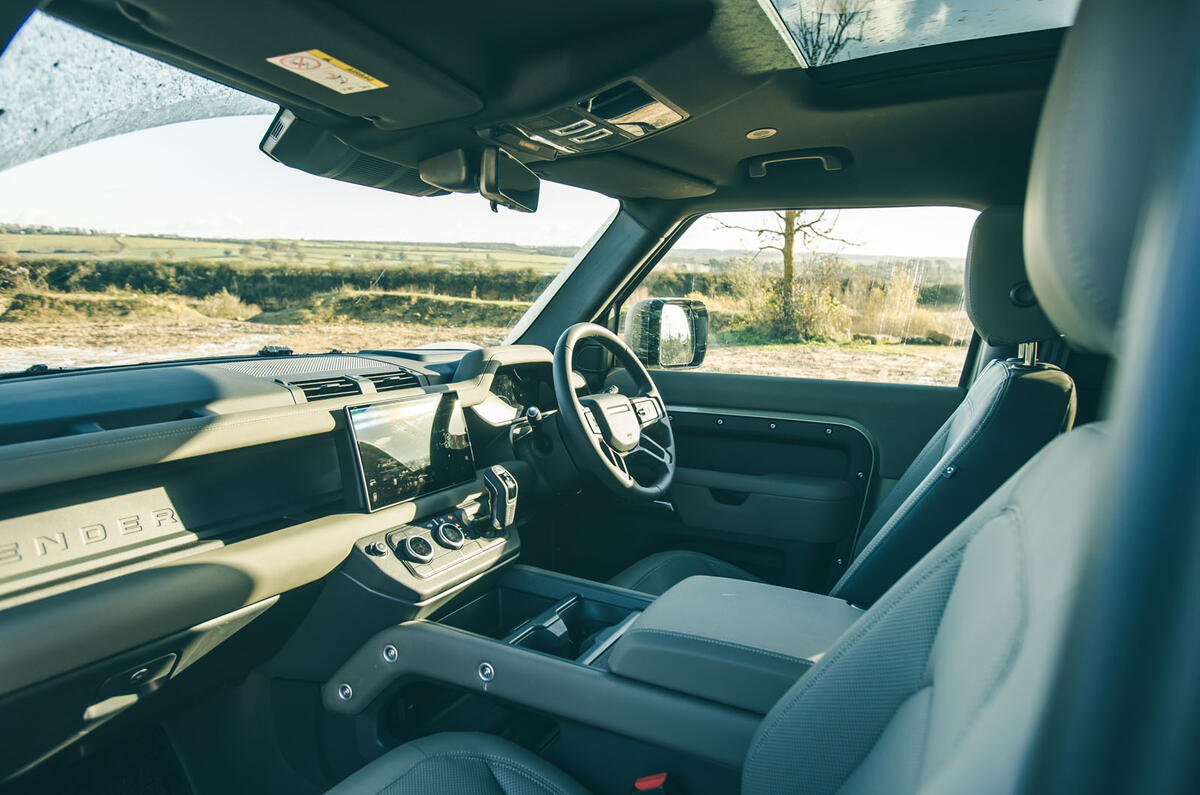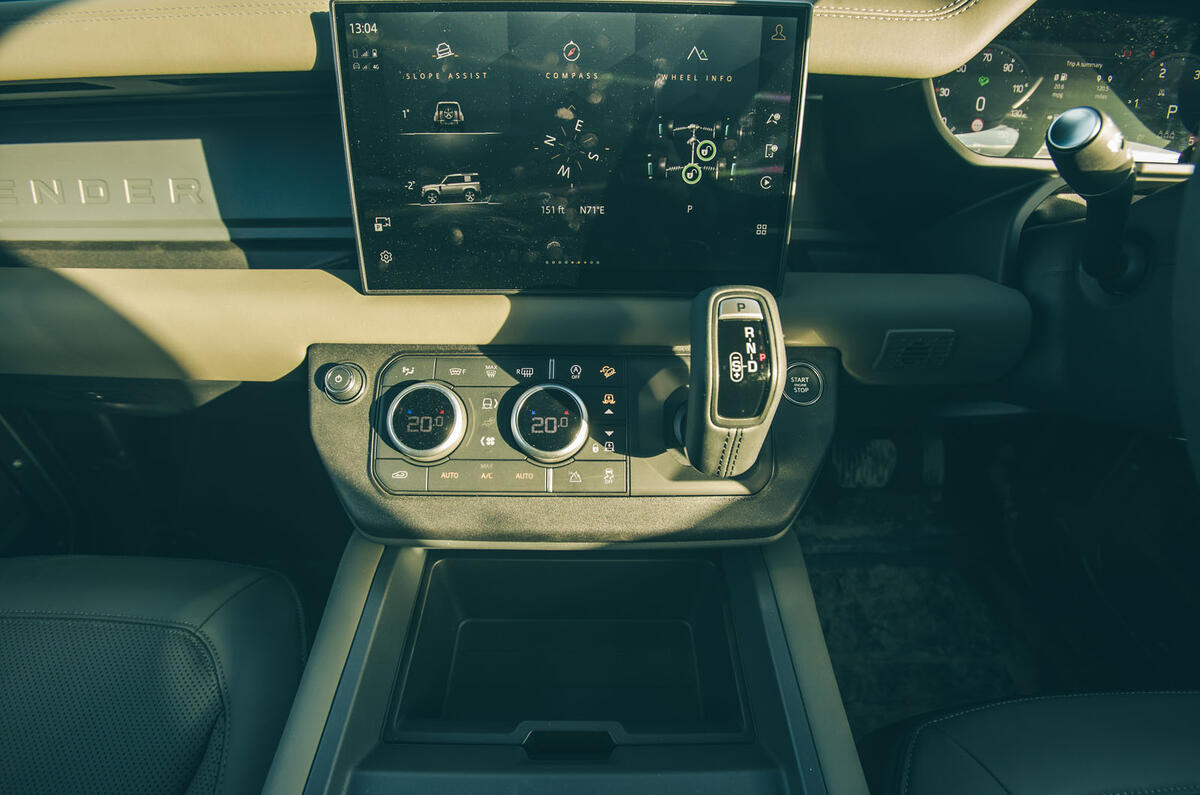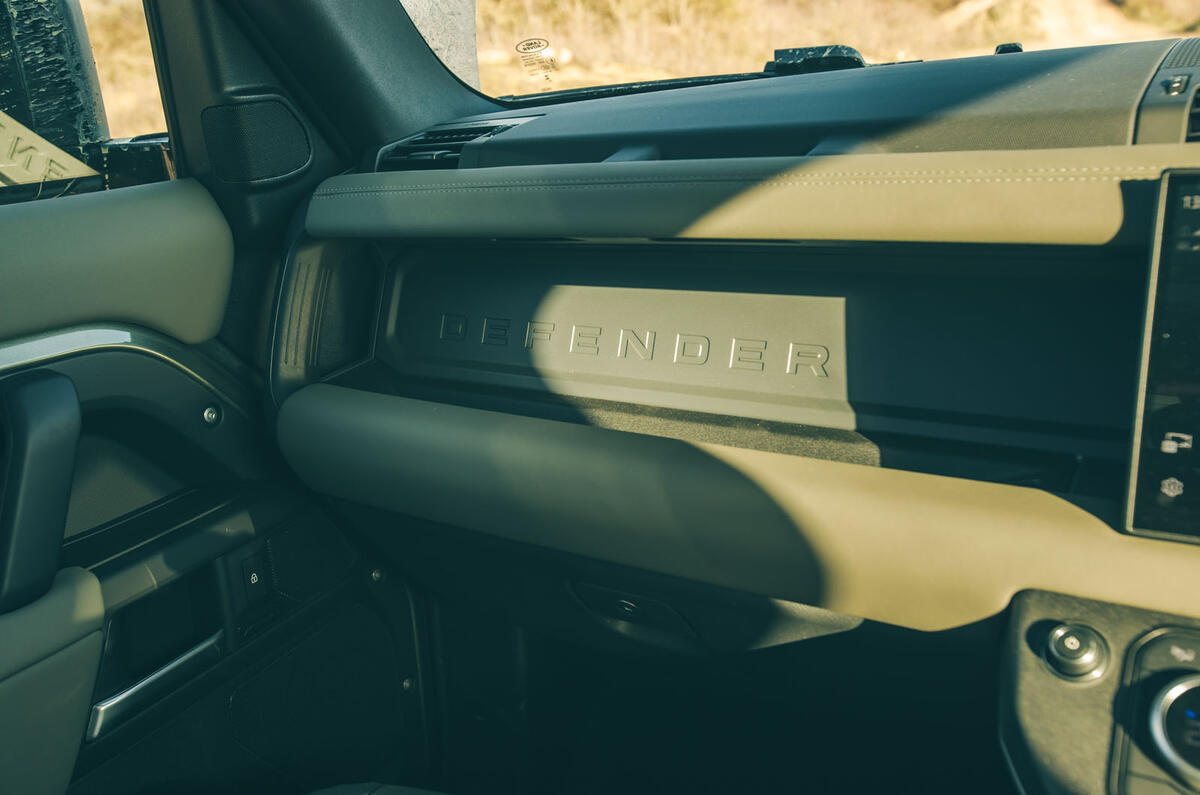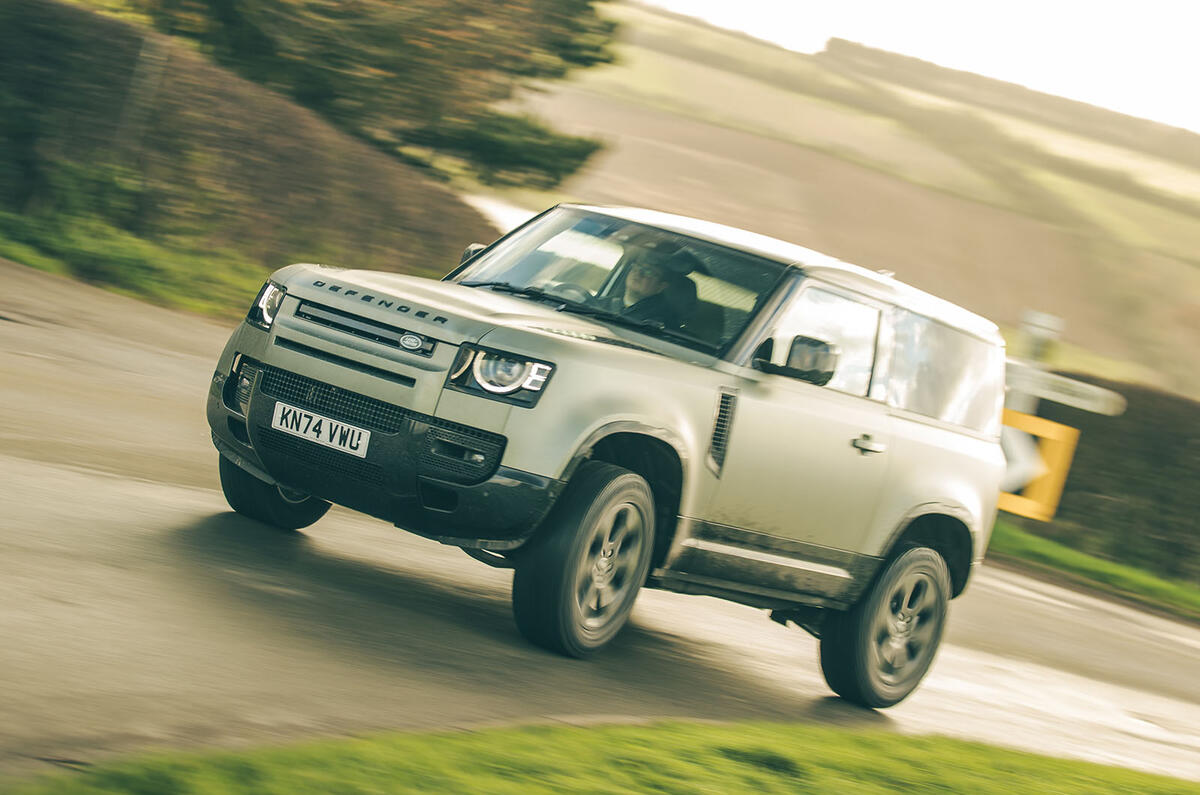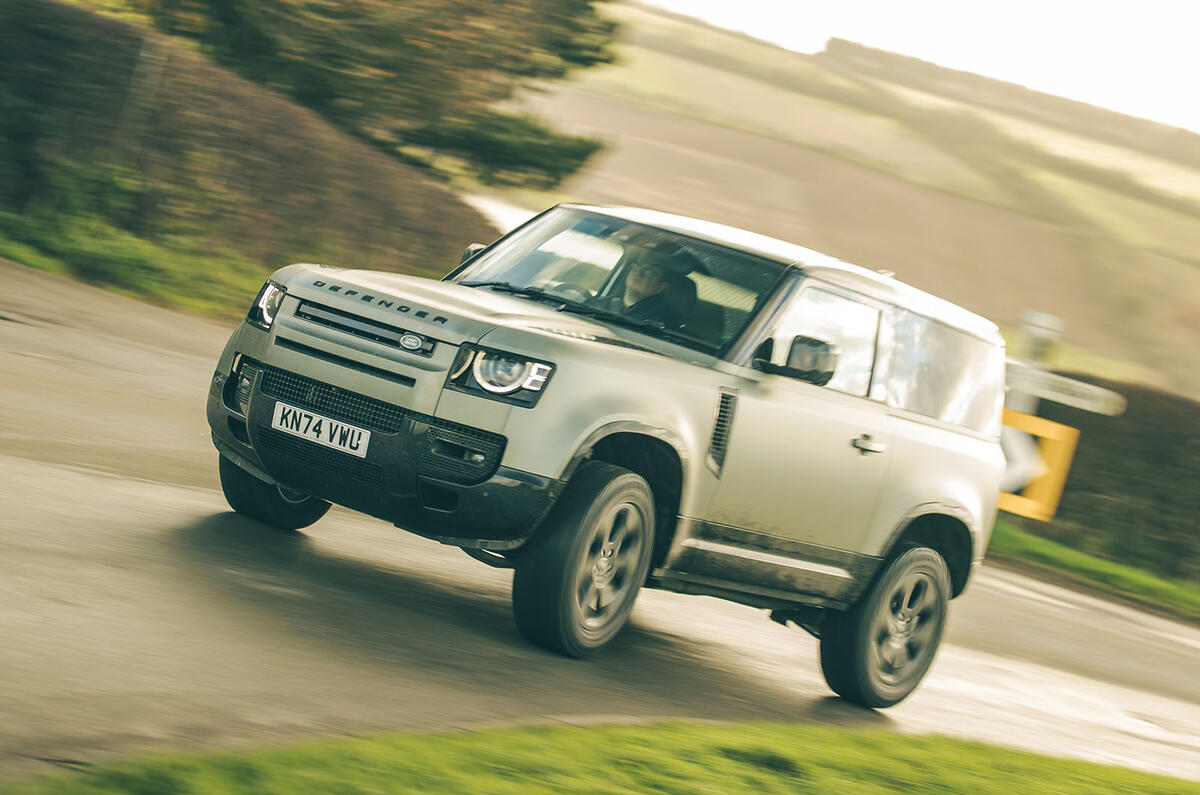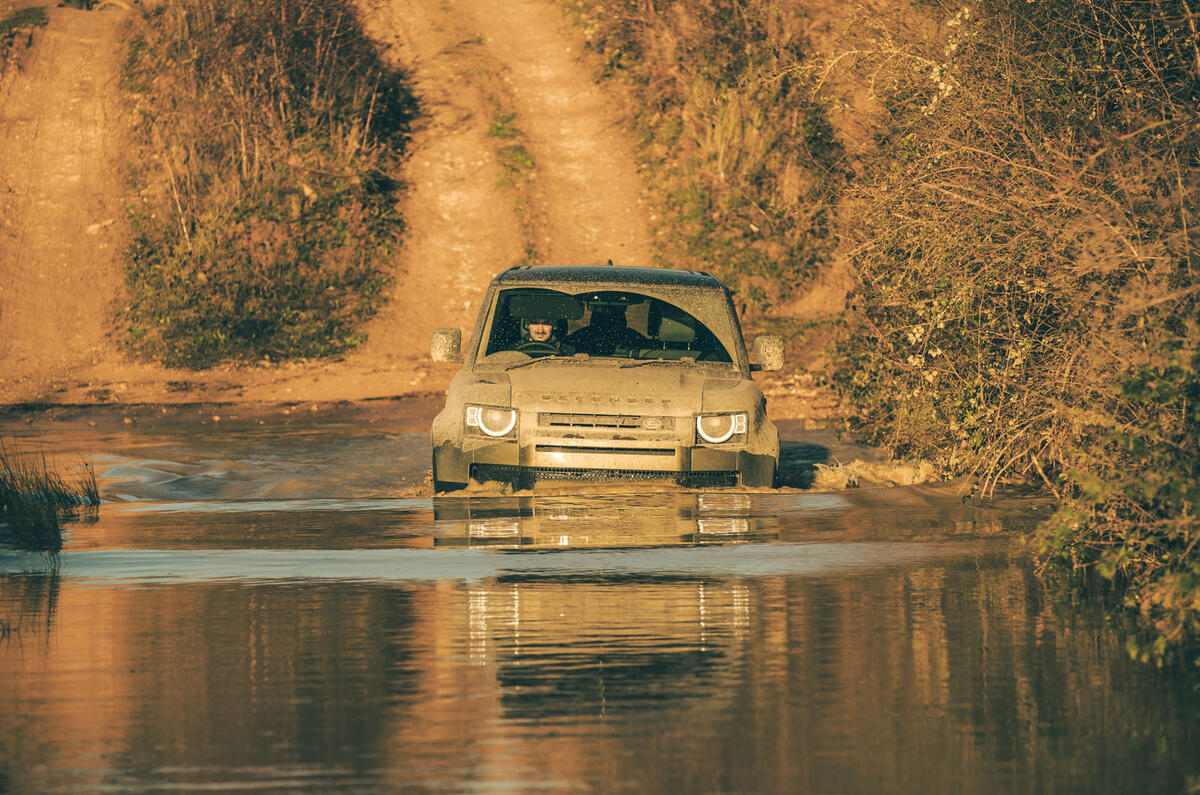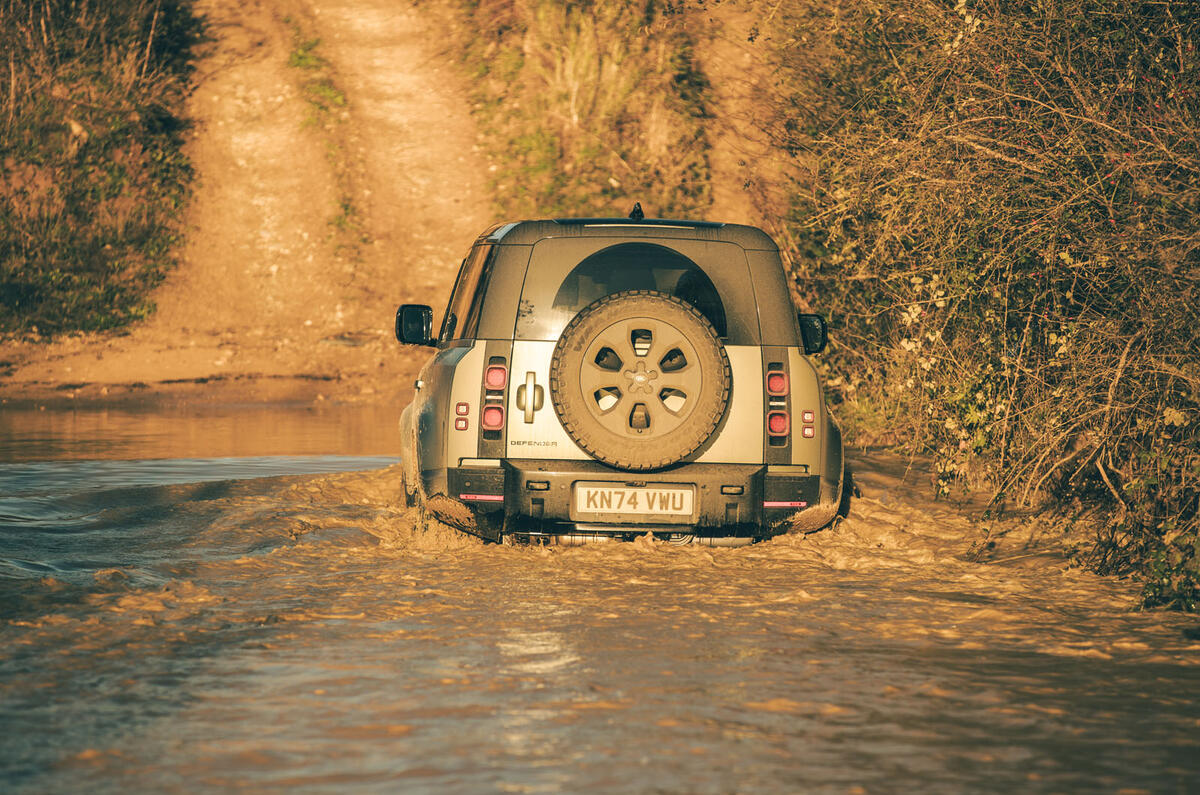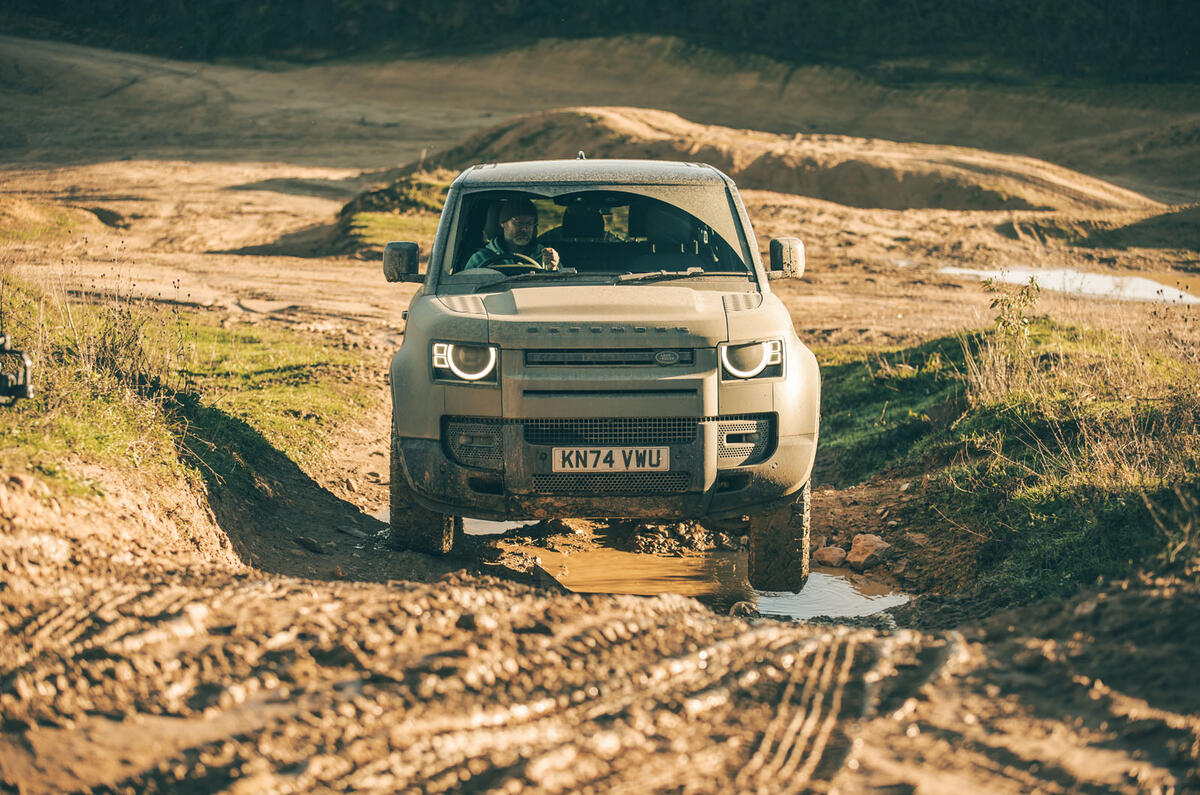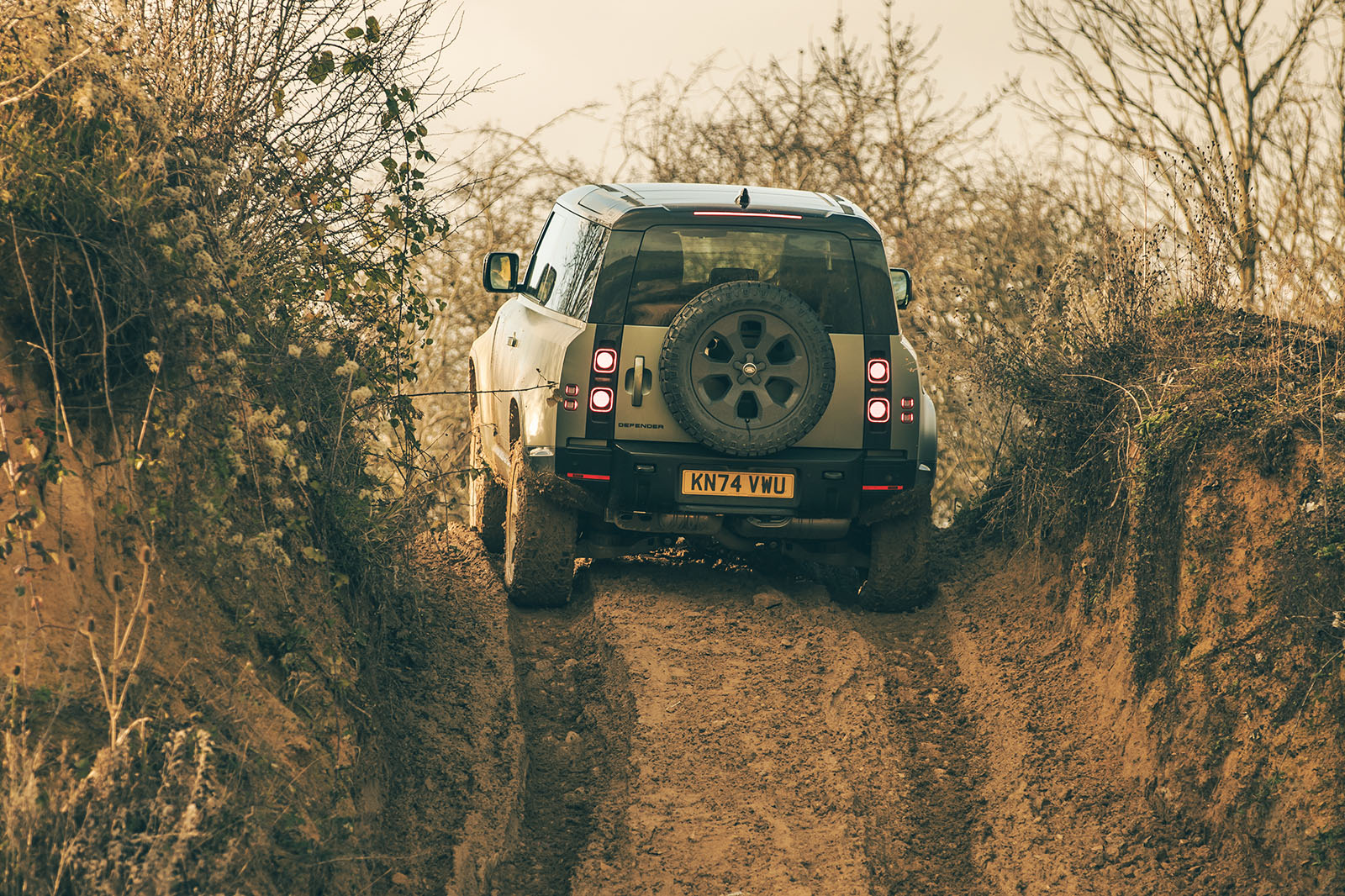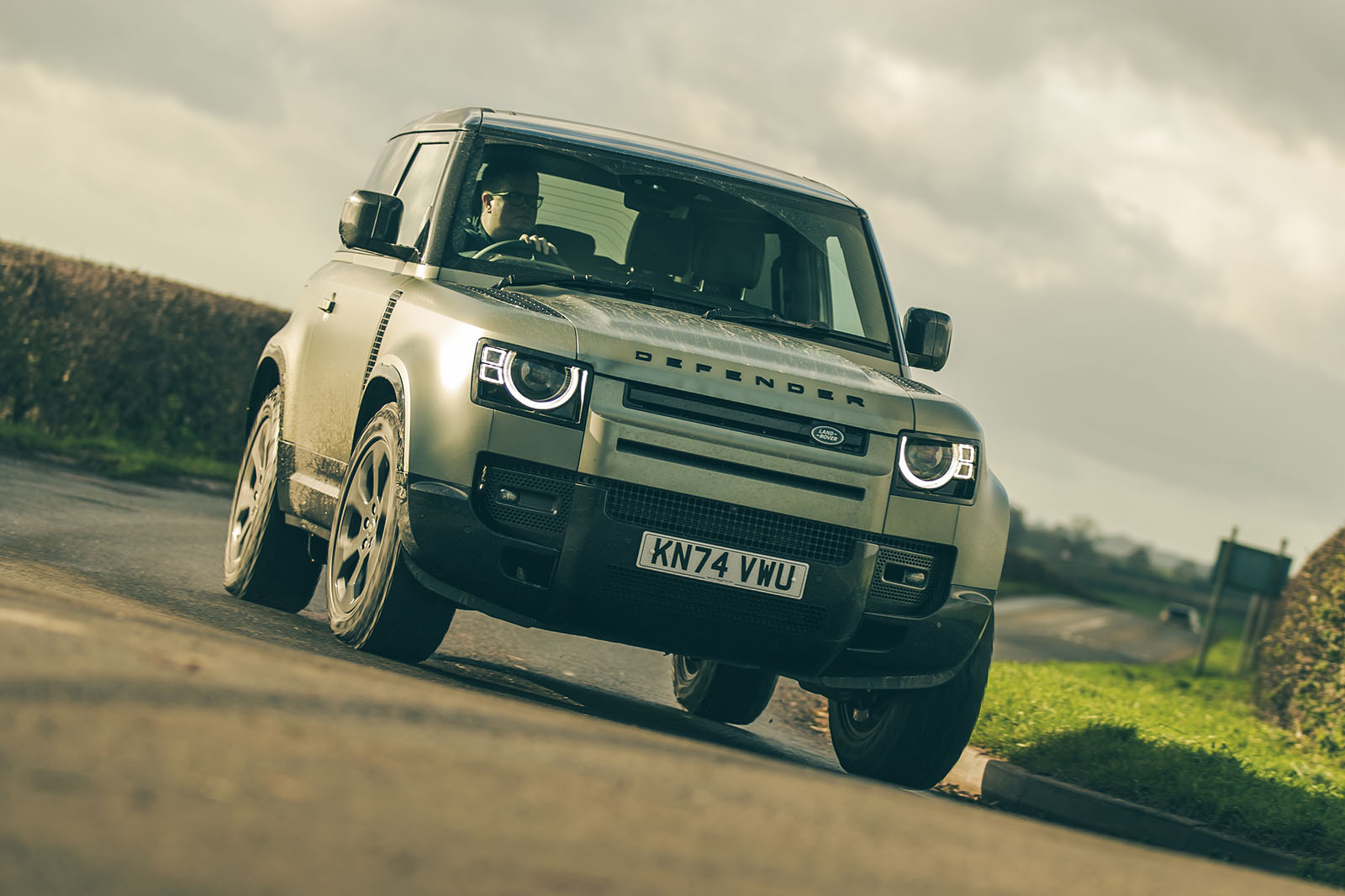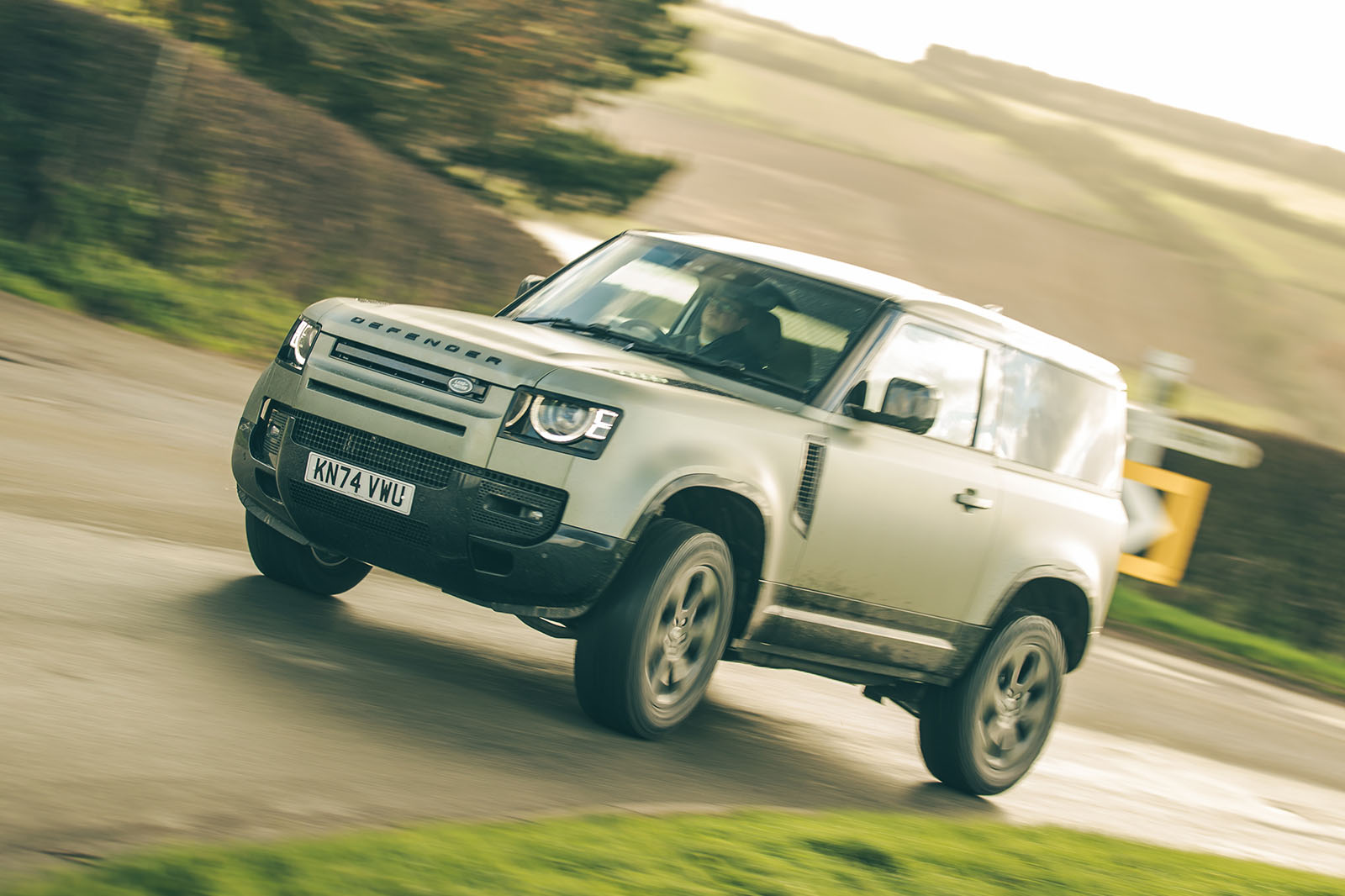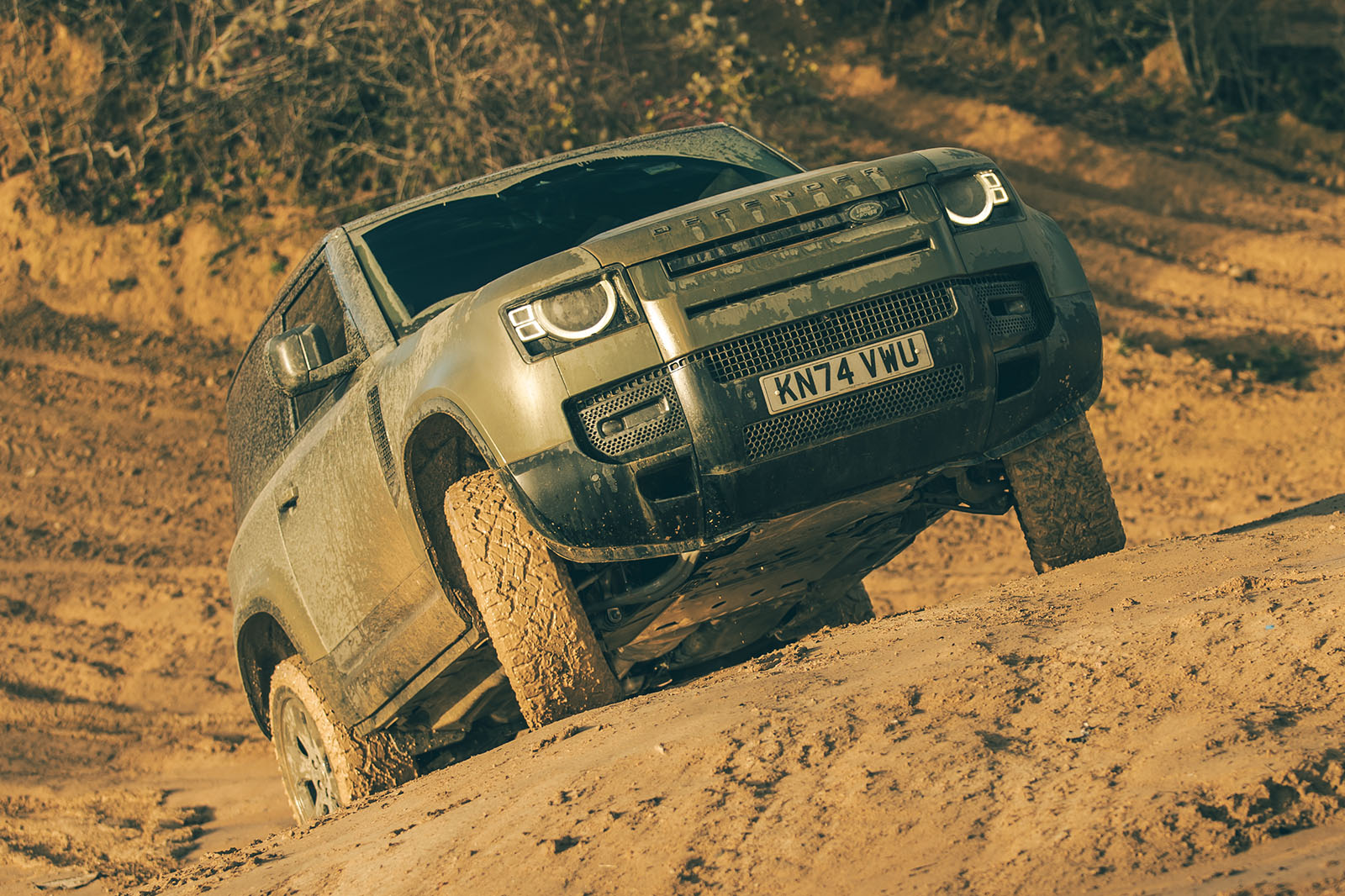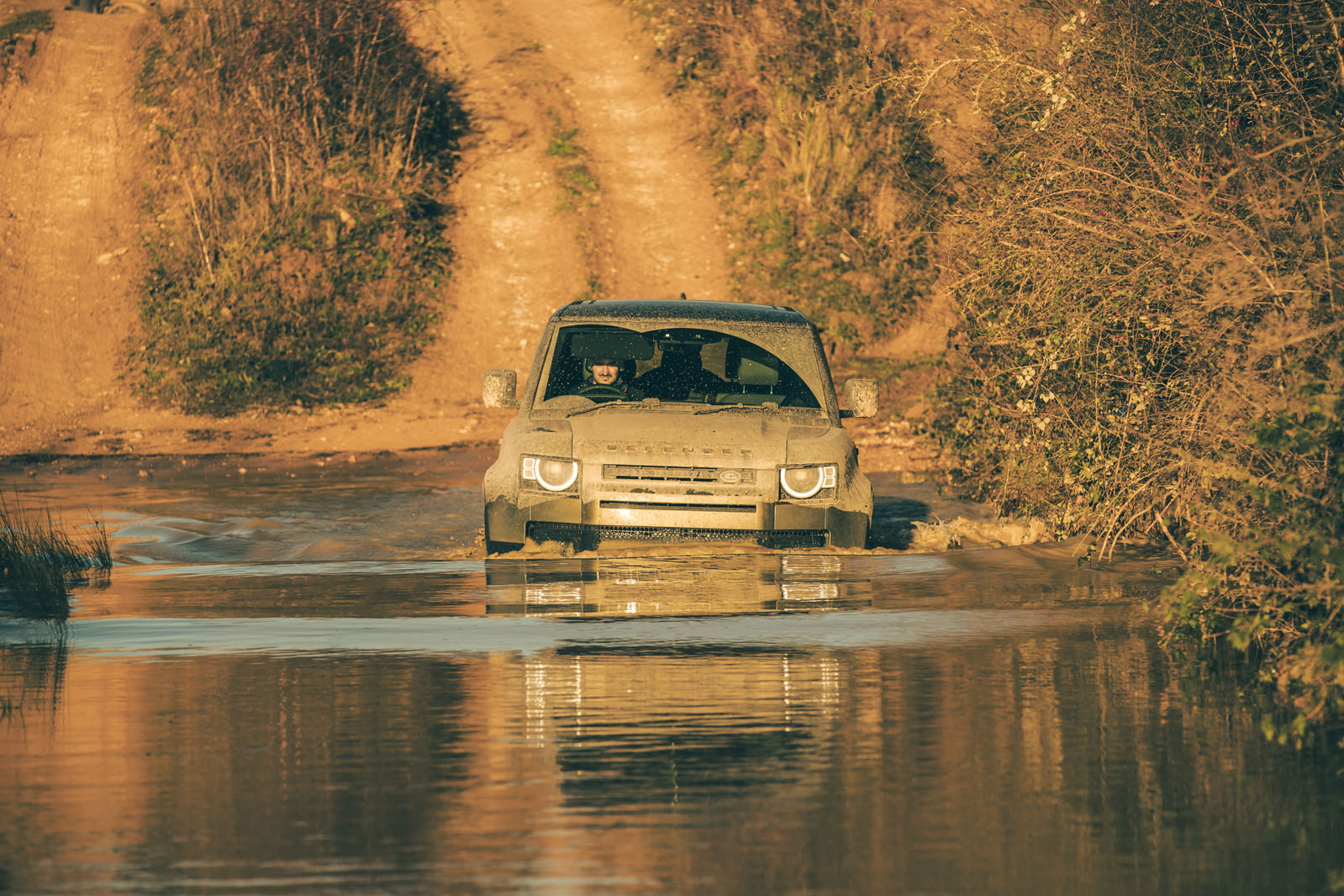It feels like Land Rover has aimed for an interior that straddles both luxury and utility. No easy task, but it has pretty well nailed it. That there are exposed sections of body colour and star-head bolts, a big broad slab of dashboard with grab handles and a dinky instrument binnacle all evoke the original Defender, but that wouldn’t recognise the material quality and the fit and finish of its construction.
There are fewer obviously plush surfaces than you’ll find in a Range Rover or Land Rover Discovery, or the most luxurious among its SUV competition (say, an Audi Q7 or Volvo XC90), but material choices lift it above a Jeep Wrangler, even a Toyota Land Cruiser, and it feels airy and spacious instead of basic.
As well it might. At 2105mm across the mirrors, this is a wide car, with a cabin spacious enough, if you spec it, for a middle jump seat between the two regular front chairs. They’re as broad and welcoming as it isn’t; but for kids or short hops, it’d do a job – although we imagine it’ll spend most of its time folded flat, where it creates a broad centre console.
The driving position is upright and accommodating, the steering wheel huge and visibility fantastic. You can see to the extremes of the bonnet, and big windows and large door mirrors make side visibility strong, although rear vision is hindered mildly by the tailgate.
Rear passengers get as good a deal as the driver, with big seats and masses of head and leg room. Behind them is a boot with a narrower opening than top-hinged rivals, but there’s plenty of space in there, and you can specify two seats in it, too, although we haven’t had a chance to sit in them.
With the 2025 model year update, meanwhile, new heated and cooled seats with winged headrests (for rows one and two) have come in on upper-tier models, or as a ‘signature’ option on lower tier ones. The palette of interior trim materials has been made broader and richer. And, if you buy a supersize Defender 130, you can now get individual ‘captain’s chairs’ in row two granting step-through access to the three-seater third-row; which families with younger kids should appreciate.
Land Rover Defender infotainment and sat-nav
When Land Rover tells you it has created a new-generation infotainment system, you’d be forgiven for being concerned. This is a company whose entertainment, information and communications systems have routinely not just been second best to almost everyone else’s but also more prone to bugs and the whole ‘turn it off and on again’ routine. However, for the first time, we’re able to tell you that the Defender's Pivi Pro system really, honestly, is as good as anyone’s.
The climate controls remain as physical dials (praise be) and frequently used systems can be accessed via haptic-feedback, variable-function steering wheel buttons. The rest are accessed via a touchscreen that responds quickly and is laid out sensibly. Or it will mirror your phone and do what you need that way.








